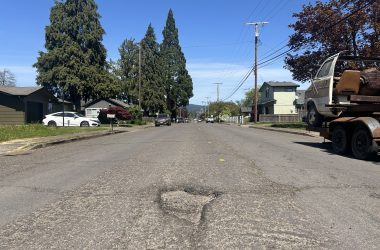
County leaders this week delivered a virtual State of the County address on Jan. 4, in which they reflected on the hardships and achievements of 2020, and their high hopes for the new year.
“Lane County began the year in solid financial condition with a budget that expanded services and preserved jobs,” commissioner Heather Buch said during the State of the County address. “We also had the highest credit rating in our history and one of the highest available to a local government … Things were good, and then 2020 went sideways.”
The county’s Health & Human Service director Karen Gaffney said that when the county’s emergency response began in February, they had very little information about the virus and relied heavily on staff with experience handling infectious disease outbreaks.
Many of the systems and strategies used to navigate an outbreak, such as contact tracing and case management, were already in place and being used by our public health team. “The heavy lift was expanding those elements to meet the needs of our communities during a pandemic as expansive and pervasive as Covid,” Gaffney said.
Lane County was one of the first and only in the state to provide $200,000 in grants to small businesses in March before state-funded opportunities became available. The county also partnered with Community LendingWorks to distribute state-funded business grants, and partnered with service organizations to distribute over $6.4 million in rental assistance.
If dealing with a pandemic wasn’t enough, the Holiday Farm Fire in September – the largest and most horrific natural disaster ever experienced in the county – destroyed nearly 500 homes.
“The fire was merciless and indiscriminate. It took the entire community of Blue River with almost no exception. The face of the region changed overnight in nearly every way imaginable,” Buch said. “Thousands of our neighbors, family members and friends are working their way through personal loss and trauma that was unknown here before the fire,” she said.
The Upper McKenzie Community Center led the charge in distributing supplies and food to residents trapped up river while fire crews worked to contain the blaze, Buch said, and John Carlile and a team of local residents organized donations and served their community without electricity or communications infrastructure.
“They provided an absolutely critical resource to hundreds of families,” Buch said.
Superintendent Lane Tompkins worked agencies and utility companies to advocate for the quick restoration of services, and what resumed classes despite facing two crises: COVID-19 and the fire, Buch said. “These days, it’s not uncommon to see families parked at the school with parents on work Zoom calls in the front seats and kids doing online school in the back seats.”
The county and partnering agencies continue to advocate for appropriate housing options and communication infrastructures to help with the recovery process.
The pandemic and wildfires have caused a reduction of emergency shelter beds and have exacerbated the county’s housing issues. To help reduce the number of emergency shelter beds lost, Steve Mokrohisky, county administrator, said that Lane County purchased and is distributing 120 pallet shelters across the county to serve as emergency shelter this winter and provided pallet shelters to Cottage Grove and Springfield, as well as in Florence and Eugene.
The county’s first-ever climate action initiative was adopted in October, commissioner chair Joe Berney said. Emission reduction is now measured, monitored and built into county planning and operations. A great group of smart, diverse residents now form the county’s first climate advisory committee, and it’s my honor to be the county commissioner on this body.
“We also adopted the county’s first-ever Community Benefits Bidding Program this year,” Berney said. “It’s always made sense to me to spend, invest and recycle money into local businesses providing local jobs to local workers. “The county’s strategic plan commits us to prioritize living wages, employer-paid family health benefits, registered apprenticeship training, women and minority-owned business, purchases sourced to local business for local jobs supporting the local economy, energy efficiency and renewable energy.This gets into procurement. That’s where the rubber hits the road, that’s where it becomes real.”
Selected trades from across Oregon are starting to use Lane County’s template to initiate these procurement priorities in other Oregon counties, cities and schools, Berney said.
“This emergency has extended for such a longtime, and we aren’t through it yet. While the vaccine is a bright spot it will take time,” Gaffney said.








